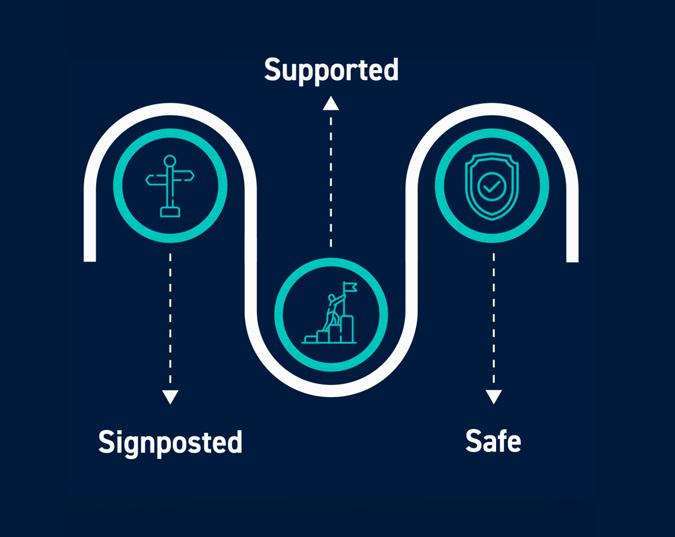What is employee engagement and why is it important?
By now, you have probably seen the statistics commonly reported about employee engagement levels worldwide. They make for stark reading:
- Overall, companies with high employee engagement are 21% more profitable.
- Gallup study shows that highly engaged workplaces saw 41% lower absenteeism.
- Engaged employees provide a better customer service.
- Low employee engagement is a costly problem! It costs businesses $4,129 on average to hire new talent, and around $986 to onboard the new hire. That means you lose over $5,000 each time an employee walks out the door, not to mention the unquantifiable cost of losing an experienced employee!
So why then, when we open the door on discussions relating to the subject of employee engagement, do some organisations balk? Is it because it seems too fluffy a topic, even though statistics and research warn us of the real commercial consequences of not nurturing it? Is it because it’s too vague a notion and management teams simply don’t know where to start? Or could it be that companies feel that they are simply just too busy to stop and have the conversation about their employee engagement levels at the present moment in time? Most likely it’s a combination of these reasons, along with other reasons such as ‘we have a survey that tells us this each year’ or ‘staff seem happy and are paid in line with marketplace conditions so we really don’t have any issue here’.
These may sound familiar to you – and if so, I would ask you to stay with us, see this article through and then decide if your company would benefit from looking more closely at this so often misunderstood and misinterpreted area of the organisation’s overall performance.

What even is employee engagement?!
From the research we have undertaken at OBLS, there is no ‘one definition’ of employee engagement. We believe that this is partially the reason that people may find this subject hard to ‘pin down’ and as a result, why organisations may shy-away from having open and honest conversations about it.
A definition we like for employee engagement is:
‘A positive attitude held by the employee towards the organisation and its value. An engaged employee is aware of business context and works with colleagues to improve performance within the job for the benefit of the organisation. The organisation must work to develop and nurture engagement, which requires a two-way relationship between employer and employee’
(Robinson et al. 2012, p.17)
It’s the dream! When you read this definition can you just pause for a moment and let your imagination go wild; visualising a team of engaged employees who ‘….work to improve performance within the job, for the benefit of the organisation’ . If this isn’t the ‘wow’ factor in terms of performance and engagement levels, then we don’t know what is!
Essentially, employee engagement goes beyond the concept of the ‘more or less satisfied employee’ to the engaged colleague who willingly displays what can be termed as ‘organisational citizenship’ behaviours.
We can all agree those definitions make perfect sense, but now we need to know more about the conditions that promote ‘organisational citizenship behaviours.’ That is our goal – to help you to understand more about how big concepts actually relate to employee engagement.

THREE IMPORTANT THINGS TO CONSIDER WHEN ATTEMPTING TO ENGAGE EMPLOYEES IN THE CURRENT CLIMATE
- Reputation: Develop a strong employer brand in the marketplace by being clear on what you stand for
Employer branding is focused on gaining benefits through the communication of a firm’s individuality and uniqueness. Several studies have concluded that an organisation as a brand encompasses characteristics that may include quality and innovativeness, values, culture, programs, and most importantly its people. Employer branding is not only an employee-seeking strategy – it’s also a strategy to ensure that a trustworthy and appealing reputation of the organisation permeates in the consciousness of the wider market place (Nappa 2013). Today’s enterprises are investing generous amounts of resources and efforts to achieve the ‘Best Employer’ status due to increased competition to be able to differentiate and gain competitive advantage over rivals (Lievens and Highhouse 2003).
So in summary, get your teams together and ask the challenging questions about how you are perceived in the employee marketplace. This is a great starting point.
- Really assess your attrition rates, and begin to dig deep into root causes.
Fernandez (2007) speaks of the distinction between job satisfaction and engagement, contending that employee satisfaction is not the same as employee engagement and since managers cannot rely on employee satisfaction to help retain the best and the brightest, employee engagement becomes a critical concept.
To summarise – begin to analyse the feedback from your exit interviews, to establish the real reasons that employees are leaving your organisation.
- Employee engagement is not a one-way process!
The Institute of Employment Studies (2018) suggests that employee engagement is the result of two-way relationship between employer and employee, with engagement needed on both sides.
Begin to assess what two-way forums you have at present for engaging employees. How do you know that you have an effective space for honest, truthful and meaningful viewpoints? Ask the hard questions!
You might be happy just to be keeping employees satisfied while this pandemic rages on around us. But what about tomorrow? At OBLS we continuously have our fingers on the pulse so that today’s interventions do not become tomorrow’s forgotten practices of the past. Engage with us today – to shape the organisation of the future that you truly desire.
Get in touch today to find out how OBLS can work with you to build a more effective employee engagement strategy or take our free online ‘cultural gap analysis tool’ right below now.

FREE RESOURCE - EVOLVE
COMPLETE OUR CULTURAL GAP ANALYSIS TOOL
Carry out an easy 3-step gap analysis now, which we will be happy to follow up with a free, no obligation virtual check-in.





